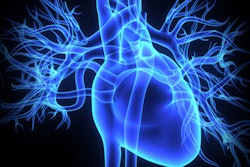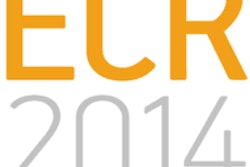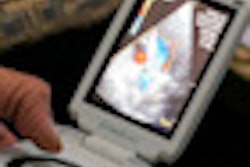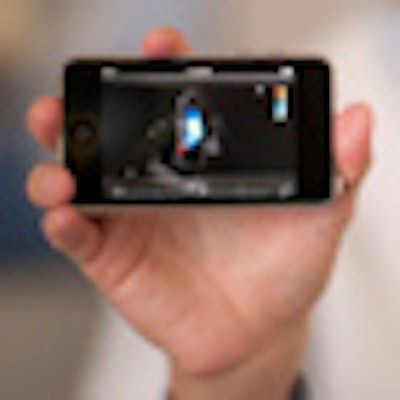
Villagers in a remote area of Honduras received access to first-rate echocardiography thanks to a project that married a handheld ultrasound scanner with an iPhone-based image interpretation app. The project could be a model for delivering high-quality imaging to other underserved areas.
The combination of a compact ultrasound system and a smartphone enabled onsite healthcare providers to get a first look at images that were then sent to the U.S. for overread by experts. The arrangement resulted in only a minimal loss of accuracy compared to conventional workstation-based image interpretation, according to a paper published online in the Journal of the American Society of Echocardiography. The research team was led by Dr. Brian Choi, co-director of advanced cardiac imaging at George Washington University's Richard B. and Lynne V. Cheney Cardiovascular Institute.
"Putting the two together may improve access to expert echocardiographic consultation, whether on humanitarian missions or in the domestic off-hours or 'stat' evaluation setting," Choi told AuntMinnie.com. "Furthermore, the overall cost for this system is favorable compared to previously described methods."
The Cheney Cardiovascular Institute supports an annual medical mission to a remote area of Honduras that suffers from relatively inaccessible medical care and a lack of ultrasound availability. In addition, Chagas cardiomyopathy is endemic in rural Honduras, and the ability to perform diagnostic echocardiography would be highly useful for diagnosing this severe disease in this setting, Choi said.
The institute had recently purchased a Vscan compact ultrasound system (GE Healthcare) for potential research applications, but it lent the unit to the mission team due to its obvious value for the medical mission setting, according to Choi. While no expert echocardiographer/sonographer was available to accompany the team, a general cardiology fellow was able to participate.
"We felt that if she were able to send the images back to the U.S. for remote expert overread, sending the Vscan with the mission would be useful," Choi said.
In addition, Choi had been working with software developer mVisum to develop an echocardiography app for smartphones, and he believed that the marriage of Vscan with the app would offer the most advanced method of remotely acquiring images, as well as remotely reading them in the most convenient way possible.
"If an echo [study] arrives in the middle of the day or night when I am not near a reading station, that read would be delayed until I could get to a workstation," Choi said. "However, if I could just look at my phone, I could read it anywhere -- at home, in a restaurant, or while I am standing in line at the grocery store."
Prior to the Honduras mission, the approach was validated by a research team that compared reading echo images off the smartphone versus traditional reading on a scanner display or workstation (J Am Soc Echocardiogr, September 17, 2011).
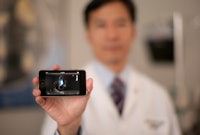 Choi holding an iPhone running echocardiography reading software. By Holger Thoss, courtesy of George Washington School of Medicine and Health Sciences.
Choi holding an iPhone running echocardiography reading software. By Holger Thoss, courtesy of George Washington School of Medicine and Health Sciences.A nonexpert (the general cardiology fellow) performed limited, indication-oriented echocardiography using Vscan with standard parasternal and apical views on 89 patients in a remote Honduran village. The patients had a mean age of 54 ± 23 years, and 57% were women. The most common indications for echocardiography included arrhythmia (33%), cardiomyopathy (28%), and syncope (15%), according to the researchers.
After the cardiology fellow made a preliminary point-of-care diagnosis, images were sent to two expert echocardiographers in the U.S. for verification on a Vscan Gateway workstation. If any identified major abnormality was not matched and categorized at the same level of severity (mild, moderate, or severe) by either expert interpreter, a change in the point-of-care diagnosis was recommended, according to the authors.
After a minimum of four weeks had passed, the studies were anonymized and reinterpreted over a wireless network using the mVisum echocardiography app on an Apple iPhone 3GS with iOS version 4.1 For the purposes of the study, the point-of-care diagnosis was judged to be accurate if any abnormal finding was matched and categorized at the same level of severity by either expert interpretation, according to the team.
Point-of-care diagnoses were changed in 35 cases (38%) by the expert readers on the workstation. Of the changes, 41% involved ventricular function correction, 38% were due to valvulopathy correction, and 18% stemmed from poor image quality.
The researchers found 90% intraobserver agreement in interpretations between workstations and smartphones, with a Cohen's kappa value of 0.86 (95% confidence interval [CI]: 0.76-0.97). This demonstrates excellent agreement between the two technologies, according to the authors.
Because only nine studies were discordant, no clear pattern could be discerned for these findings, Choi said.
In other findings, the researchers found 82% interobserver agreement between the experts, with a Cohen's kappa value of 0.82 (95% CI: 0.70-0.94).
"Remote expert interpretation on smartphones may improve access to expert echocardiographic consultation," the authors concluded. "When paired with images acquired by a [pocket-sized cardiac ultrasound] device, the increased mobility in image acquisition and interpretation may markedly expand the use of echocardiography in heretofore inaccessible clinical settings."




